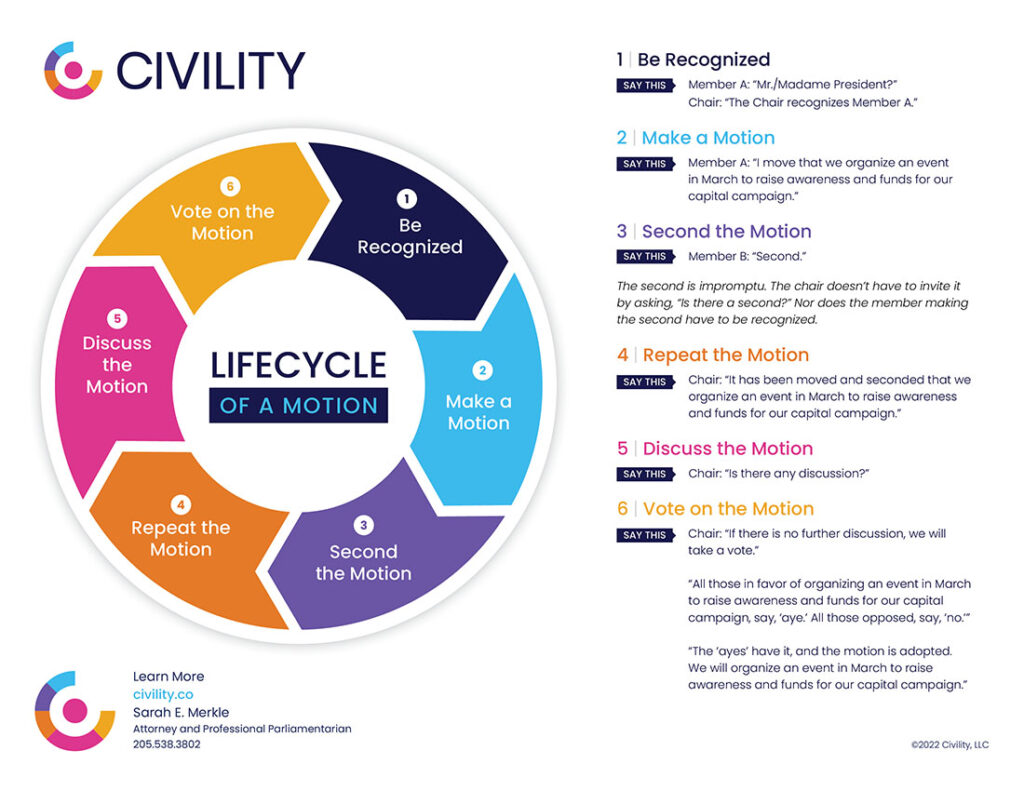Remember that previous post on the parliamentary procedure basics for how to make a motion? Here’s “Making Motions – Round 2,” a more detailed guide on the specific language* you should use both for making a motion and, if you’re the presiding officer, for carrying it through to a vote. To access a printable infographic of the motion-making process, click here.
Step 1: Member A Seeks Recognition
Say this → Mr./Madame President?
Step 2: The Presiding Officer Recognizes Member A
Say this → The Chair recognizes Member A.
Step 3: Member A Makes a Motion
Say this → I move that we organize an event in March to raise awareness and funds for our capital campaign.
Step 4: Member B Seconds the Motion
Say this → Second.
Important Note: The second happens in an impromptu manner. The chair doesn’t have to invite it by asking, “Is there a second?” Nor does the member who makes the second have to seek recognition beforehand.
Step 5: The Presiding Officer Repeats the Motion
Say this → It has been moved and seconded that we organize an event in March to raise awareness and funds for our capital campaign.
Step 6: The Presiding Officer Asks for Discussion**
Say this → Is there any discussion?
Step 7: Members Discuss the Motion OR Make Another Motion
Just follow the procedure above. Seek recognition, and once recognized, make comments on the pending motion or make another motion.
Step 8: The Presiding Officer Takes a Vote
Say this → If there is no further discussion, we will take a vote. All those in favor of the motion that we organize an event in March to raise awareness and funds for our capital campaign say, “aye.” All those opposed say, “no.” The “ayes” have it and the motion is adopted. We will organize an event in March to raise awareness and funds for our capital campaign.
And there you have it – a simple process with uncomplicated and logical wording. Note the presiding officer’s helpful repetition of the exact words of the motion, preventing confusion and keeping attention focused! Like most parliamentary procedure rules, these steps for proposing action items provide order and efficiency.
*Parliamentary authorities (Robert’s Rules and other guides) differ on the exact words that members and presiding officers should use. Some parliamentarians are “sticklers” about specific language. For the most part, these differences have no practical effect. The steps for processing a motion remain the same. In my view, variations on these words are fine, as long as what is said clearly conveys the correct information.
**This step occurs only if the rules allow discussion on the motion. For example, discussion is not allowed on motions to limit or close debate.
Where to Learn More


